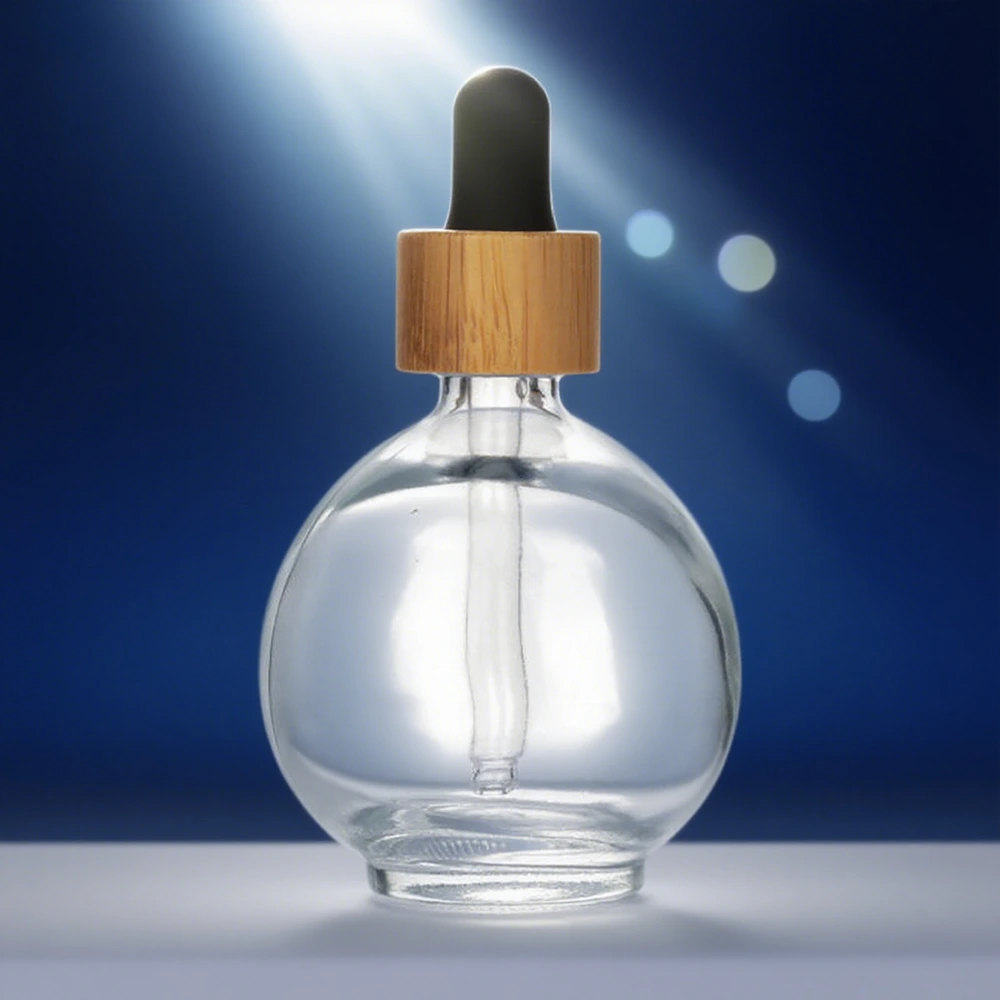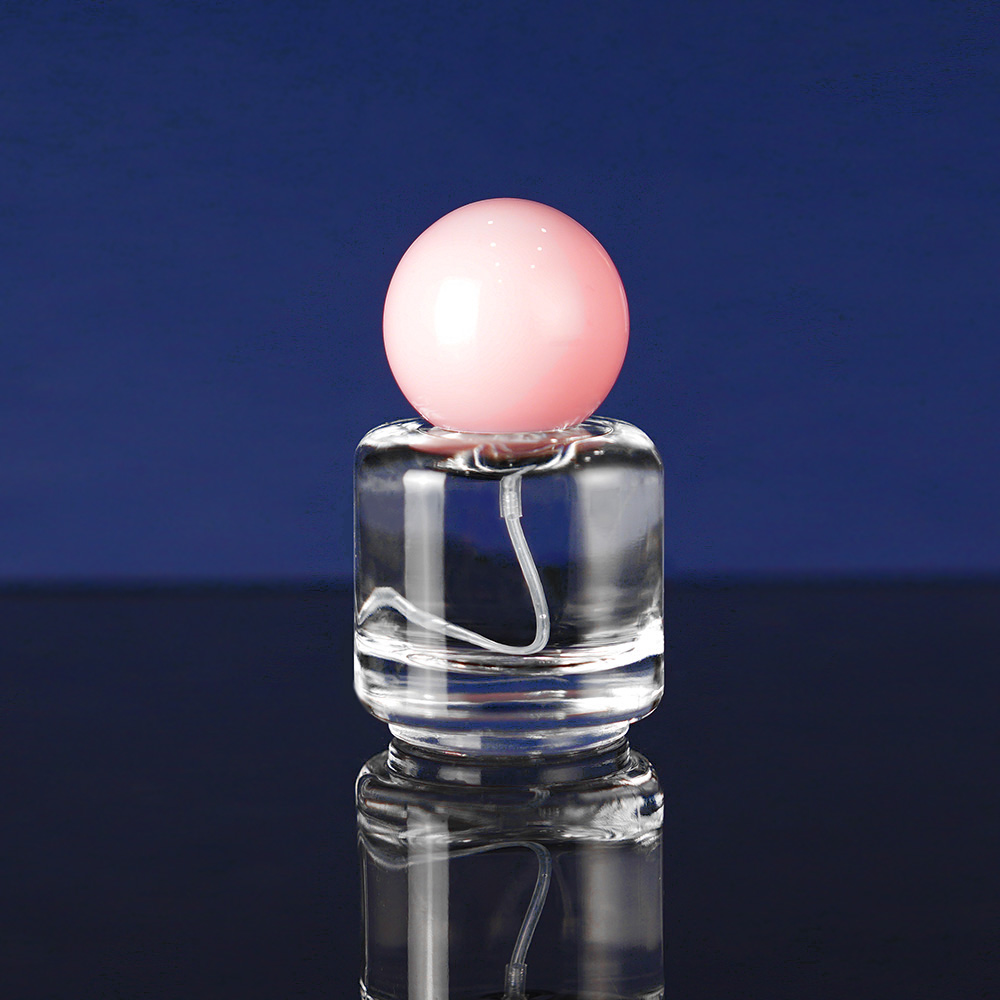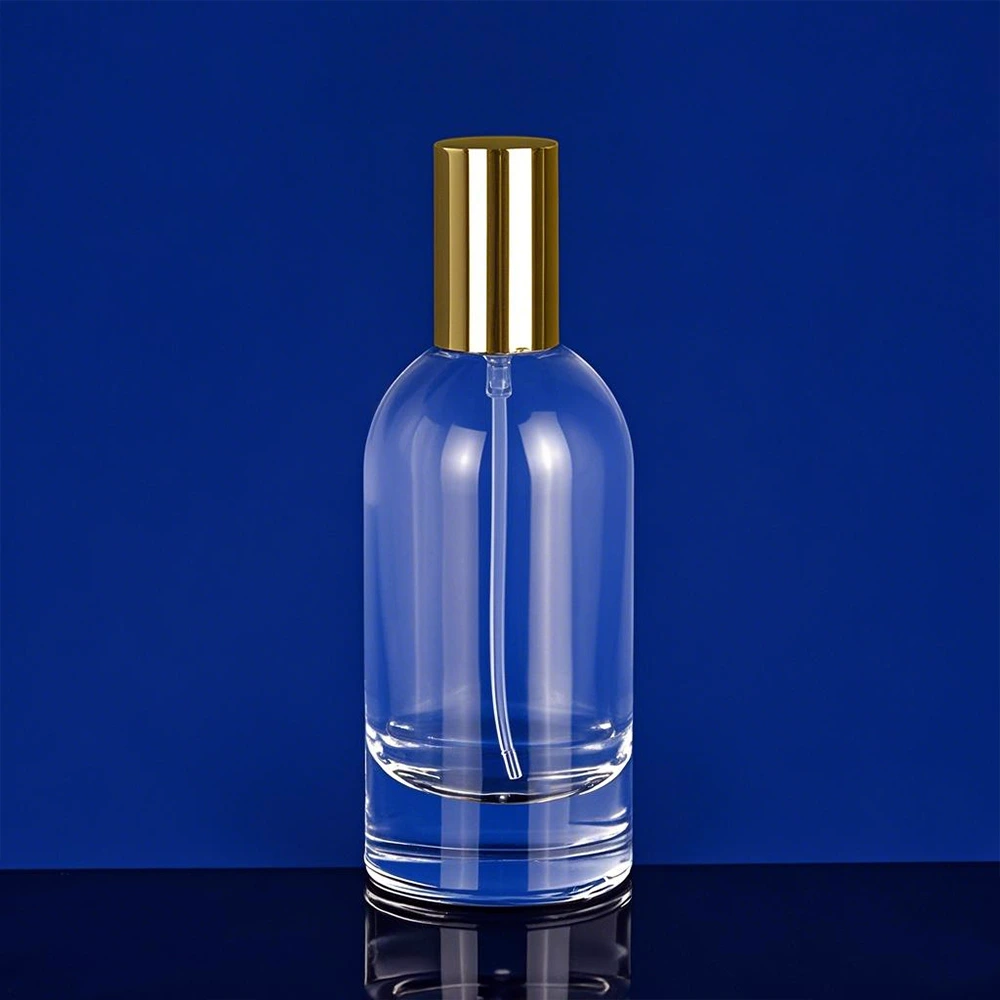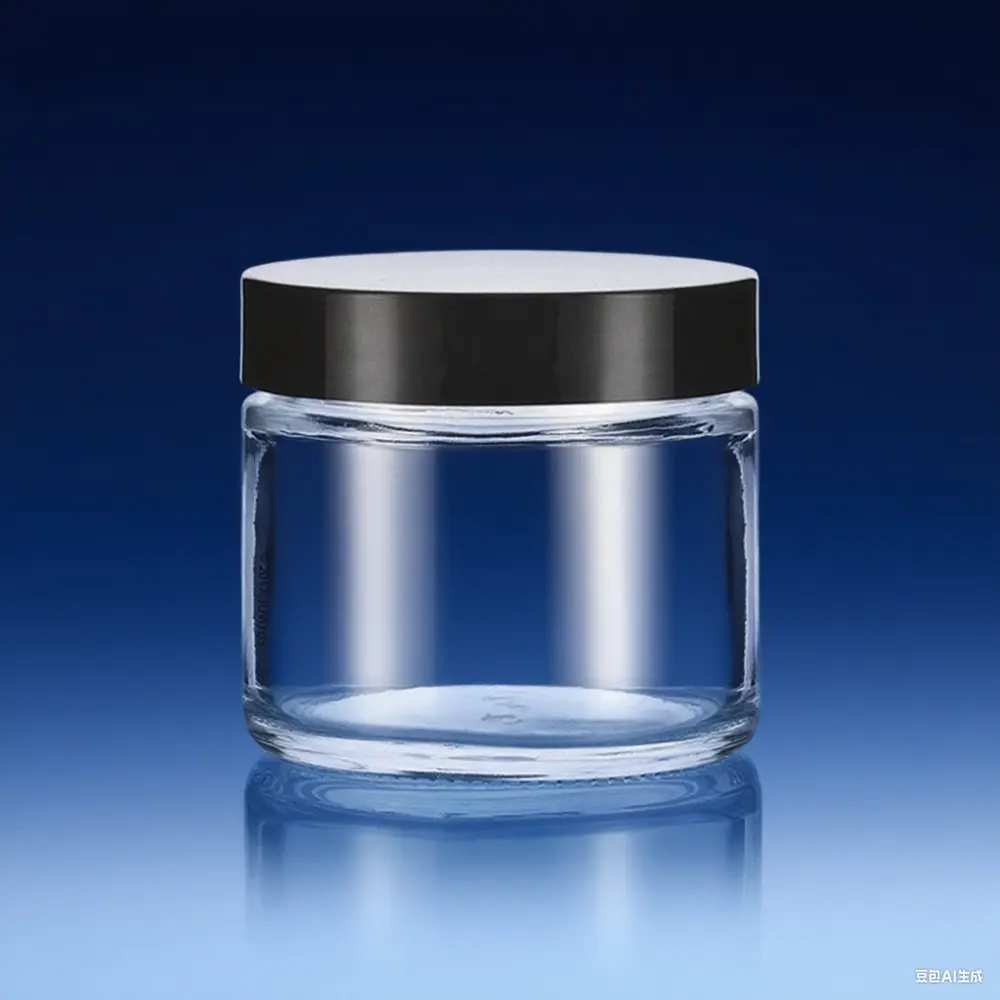
Viitorul sticlelor cu role pentru uleiuri esențiale ecologice
Cuprins
Piața uleiurilor esențiale este în creștere rapidă. De ce? Pentru că tot mai mulți oameni își doresc produse naturale pentru sănătate și toată lumea devine mai conștientă de protejarea mediului. Această schimbare majoră înseamnă că firmele de ambalare, în special cele pentru sticlele cu role pentru uleiuri esențiale, trebuie să vină cu soluții noi, ecologice și utile. Acest raport analizează îndeaproape sfaturile inteligente necesare pentru a stabili reguli importante, a calma noile materiale, a schimba tendințele pieței și a proteja mediul. sticlă cu rolă pentru ulei esențial care funcționează acum și în viitor.
1. Introducere
Acest raport explică cu atenție ce înseamnă de fapt ambalajele „ecologice”. Acum prezintă opțiunile bune disponibile, cum ar fi sticla reciclată (reciclată post-consumare sau sticlă PCR) și plasticul reciclat (diverse tipuri de plastic PCR). Indică noi oportunități pe piață, enumeră aspecte importante de care trebuie să țineți cont furnizorii atunci când alegeți și oferă sfaturi practice. Aceste sfaturi pun accent pe alegerea materialelor potrivite, proiectează articole pentru reutilizare sau reciclare (design circular) și sunt perfect oneste cu clienții. Mărci precum... Vesseluxe se află într-o poziție magnifică nu doar pentru a fi susținute, ci chiar pentru a conduce, se îndreaptă către ambalaje mai durabile pentru uleiuri esențiale.
2. Promovarea globală a sustenabilității și a regulilor de ambalare
Modul în care produsele sunt ambalate la nivel mondial se schimbă pentru totdeauna. Acest lucru se întâmplă deoarece clienții își doresc opțiuni mai ecologice, iar guvernele impun reguli stricte.
2.1. Regulamentul Uniunii Europene privind ambalajele și deșeurile de ambalaje (PPWR)
Începând cu 12 august 2026, PPWR (Planul privind reciclarea ambalajelor) al Uniunii Europene va fi o lege nouă și foarte importantă. Aceasta este concepută pentru a preveni deșeurile de ambalaje, încurajează ferm reutilizarea și reciclarea și combate utilizarea excesivă a ambalajelor. Principalele sale obiective sunt:
- Mai puține deșeuri: Scopul acestei reguli este de a reduce deșeurile de ambalaje cu 5-15% pe persoană între 2030 și 2040. Aceasta este o indicație clară a faptului că doresc să reducă pierderile aduse mediului.
- Ambalaje reciclabile: O parte importantă a PPWR este că toate ambalajele vândute în Uniunea Europeană trebuie reciclate. Aceasta înseamnă că ambalajele trebuie proiectate astfel încât cel puțin 70% din ele să poată fi reciclate până în 2030 și 80% până în 2038. Schimbări majore în modul în care sunt proiectate aceste lucruri.
- Conținut minim reciclat: Începând cu 1 ianuarie 2030, ambalajele din plastic trebuie să conțină o anumită cantitate de material reciclat (material PCR) între 10 și 35%. De asemenea, vor exista reguli stricte pentru plasticul utilizat pentru lucruri precum alimente sau machiaj.
- Etichete mai mici și mai clare: Regula prevede clar că ambalajul trebuie să fie cât mai mic posibil, cu maximum 50% spațiu gol. Acest lucru necesită, de asemenea, o etichetă clară care să indice ce este ambalajul și cum poate fi reutilizat, oferind clienților informații utile.
- Restricții: PPWR restricționează și anumite lucruri, cum ar fi ambalajele de machiaj de unică folosință în hoteluri începând cu 2030. De asemenea, limitează utilizarea substanțelor chimice nocive numite PFAS în ambalaje, ceea ce ajută la protejarea mediului și a sănătății oamenilor.
2.2. Legea SB 54 din California (Legea privind prevenirea poluării cu plastic și responsabilitatea producătorilor de ambalaje)
Legea SB 54 din California, care a intrat în vigoare la 30 iunie 2022, este o lege inovatoare numită Responsabilitatea Așteptată a Producătorului (EPR). Practic, această lege transferă costul și efortul de gestionare a poluării cu plastic de la orașe și contribuabili la companiile care produc ambalaje din plastic. Până în 2032, aceasta va viza obiective mari:
- Reduceți și reciclați: O reducere cu 25% a utilizării plasticului, asigurându-se că toate ambalajele sunt 100% reciclabile sau compostabile și o reciclare de 65% a ambalajelor din plastic de unică folosință. Aceasta va aduce schimbări uriașe.
- EPR și taxe: Companiile de ambalaje ar trebui să se alăture unui grup special (organizație de responsabilitate a producătorului sau Pro) aprobat de stat. Acest grup va plăti și va gestiona modul în care deșeurile sunt colectate, sortate și reciclate. Taxele plătite acestor companii se vor modifica în funcție de cât de ecologice sunt ambalajele lor, încurajându-le să aleagă materiale vegetale.
2.3. Programe de responsabilitate extinsă a producătorului (EPR) - Tendințe globale
Programele EPR, care fac companiile responsabile din punct de vedere legal pentru impactul asupra mediului al produselor și ambalajelor lor de la început până la sfârșit, devin rapid comune la nivel mondial. Aceste programe vor fi extinse dincolo de Uniunea Europeană până la sfârșitul anului 2024 și se dezvoltă rapid în America de Nord (cum ar fi Canada și unele state americane) și Asia-Pacific (APAC). O caracteristică comună a acestor programe este că taxele se modifică în funcție de ambalajele ecologice. Aceasta înseamnă că firmele sunt recompensate pentru a realiza ambalaje ușor de reciclat, care utilizează materiale reciclate sau care pot fi reutilizate. Acest lucru contribuie la crearea unei „economii circulare” în care lucrurile sunt utilizate în mod repetat.
2.4. Declarații privind „compostabilitatea” și „biodegradabilitatea” - verificate cu atenție
Guvernele din întreaga lume analizează cu mare atenție afirmațiile precum „biodegradabil” și „compostabil”. Vor să împiedice companiile să inducă în eroare clienții (greenwashing) și să se asigure că oamenii pot avea încredere în ceea ce cumpără. Aceste afirmații ar trebui să fie extrem de clare, dovedite științific și ar trebui să fie puternic susținute de reglementări internaționale specifice și renumite. De exemplu, EN 13432 este standardul pentru lucrurile care pot fi compostate în spații industriale. Acesta impune ca materialul să se spargă în anumite condiții într-un timp stipulat. Acest lucru este de fapt important pentru ca brandurile să precizeze că ceva se va sparge (cum ar fi un compus industrial, o grămadă de gunoi de grajd sau un ocean) și cât timp va dura. Un material care se sparge într-un loc nu poate fi în altul. Afirmațiile false pot afecta reputația unui brand și pot duce la amenzi mari.
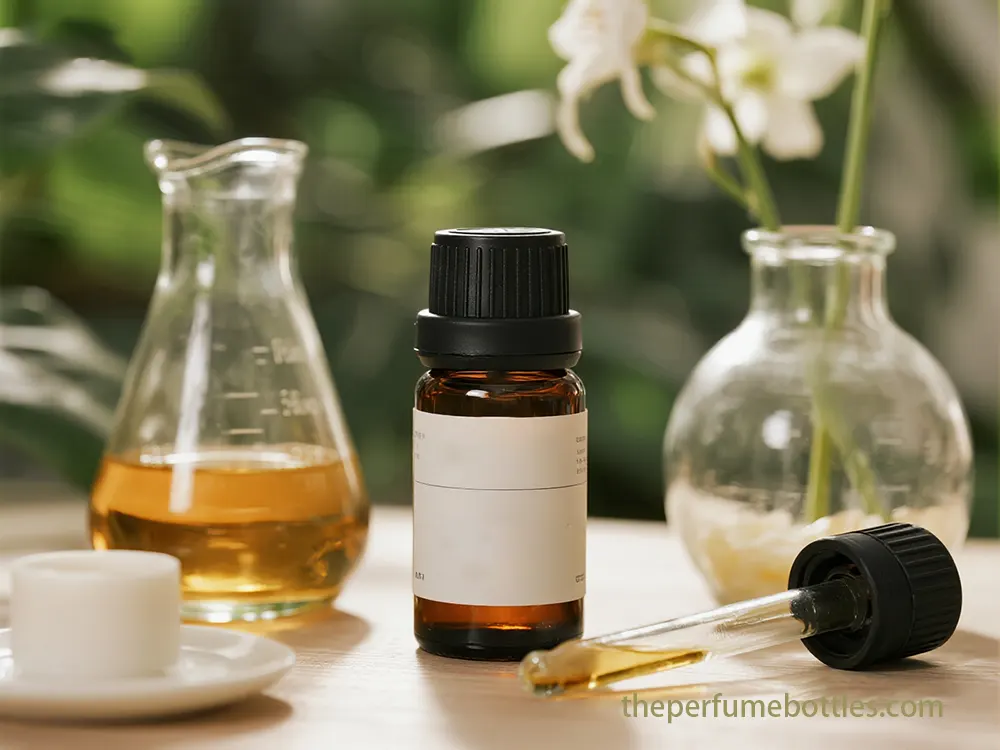
Obțineți mostre gratuite
2.5. Reguli specifice de ambalare pentru uleiuri esențiale/cosmetice (UE)
Atunci când uleiurile esențiale sunt vândute pe piele sau pentru aromaterapie, acestea trebuie adesea să respecte regulile Uniunii Europene privind produsele de machiaj (numărul CE 1223/2009). Aceste reguli se concentrează în principal pe asigurarea faptului că produsele sunt sigure, materialele sunt transparente și eticheta conține informații specifice. În plus, dacă uleiurile esențiale sunt considerate periculoase, acestea trebuie să respecte și mai multe reguli (cum ar fi regulamentul CLP). Noile reguli PPWR care interzic ambalajele de machiaj pentru utilizare individuală, în special în hoteluri, influențează în mod direct modul în care sunt concepute ambalajele mici de uleiuri esențiale. Acest lucru împinge brandurile să utilizeze opțiuni reutilizabile sau reîncărcabile.
2.6. Planuri de ambalare ecologice pentru regiunea APAC
Regiunea Asia-Pacific (APAC) devine rapid un lider în utilizarea ambalajelor ecologice. Acest lucru se întâmplă deoarece tot mai mulți clienți își doresc produse ecologice, guvernele stabilesc reguli dificile, iar oamenii sunt mai conștienți de poluarea cu plastic. Printre eforturile importante se numără țări precum India, Coreea de Sud și Australia, care fac obligatorii politicile EPR. În plus, există mai multe „pacte privind plasticul” și promisiuni voluntare din partea companiilor de a colabora pentru a reduce deșeurile de plastic și a îmbunătăți reciclarea.
3. Ce face ca sticlele cu role pentru uleiuri esențiale să fie ecologice?
De fapt, pentru a afla dacă uleiul esențial sticlă cu rolă sunt ecologice, trebuie să le vezi întregul parcurs, de la primirea materiilor prime până la aruncarea lor.
3.1. Caracteristici ecologice cheie
- Biodegradabilitate: Aceasta înseamnă că un material se poate descompune în mod natural în substanțe inofensive, cum ar fi apa, CO2 și materia vegetală, datorită organismelor vii mici, fără a lăsa în urmă substanțele nocive.
- Reciclabilitate:Este vorba despre cât de ușor și bine poate fi colectat, procesat și transformat un material în produse noi. Acest lucru îl împiedică să ajungă la groapa de gunoi și economisește resurse noi.
- Reîncărcabil/Reutilizabil:Ambalaje care pot fi folosite de mai multe ori, elimină multe ingrediente noi și produc mai puține deșeuri. Acestea includ sisteme prin care puteți recicla sticla sau o puteți trimite înapoi pentru a fi curățată și reutilizată.
- Conținut reciclat post-consum (PCR):Acesta este conținutul consumatorilor ulteriori (PCR) din ambalajele noi provenite de la produsele vechi aruncate de consumatori. Acest lucru ajută la crearea unei „economii circulare” și înseamnă că nu trebuie să folosim multe mărci.
- Amprentă de carbon: Acest număr semnificativ arată cantitatea totală de gaze cu efect de seră (de exemplu, CO2) eliberate pe parcursul duratei de viață a ambalajului, obținerea materialului și fabricarea acestuia, transportul și, în final, aruncarea acestuia.
- Epuizarea resurselor: Se pare că obținerea și fabricarea materialelor utilizează resurse naturale limitate, cum ar fi petrolul, mineralele și apa.
- Generarea de deșeuri: Măsoară toate deșeurile create pe durata de viață a ambalajelor, în special cât de mult sunt eliminate din groapa de gunoi sau arse folosind materiale reciclate, gunoi de grajd sau reutilizate.
3.2. Cum măsurăm impactul asupra mediului (LCA și indicatori cheie de performanță)
Evaluarea ciclului de viață (ACV) este cea mai bună modalitate de a examina impactul produsului asupra mediului, conform unei metode standard (ISO 14040/14044), de la început până la sfârșit („Din leagăn până în mormânt” sau „Din leagăn până în leagăn”). Pentru ambalajele uleiurilor esențiale, factorii importanți pentru măsurare (indicatorii majori de performanță sau KPI) sunt, de obicei, amprenta de carbon (cantitatea de CO2), cantitatea de energie și apă utilizată, cantitatea de resurse naturale utilizată și cantitatea de deșeuri generate. Programe speciale de calculator, cum ar fi Simapro și Echinvent, sunt adesea utilizate pentru ACV, utilizând cantități mari de date de mediu. Însă este dificil să se obțină informații precise și complete din toate părțile lanțului global de aprovizionare. De obicei, cele mai mari probleme de mediu legate de ambalaje apar atunci când se formează materii prime (cum ar fi energia necesară pentru topirea sticlei sau pentru fabricarea substanțelor chimice din plastic), iar atunci când ambalajul este aruncat, acesta nu este reciclat sau fertilizat corect.
4. Materiale și idei de design actuale, ecologice
Companiile care produc sticle cu role pentru uleiuri esențiale caută materiale ecologice și designuri noi și atractive. Trebuie să găsească un echilibru între a fi benefice pentru planetă și a menține produsul sigur, funcțional și frumos.
4.1. Ambalaje din sticlă: Cea mai bună alegere, acum cu opțiuni reciclate
Sticla a fost întotdeauna o opțiune de top pentru uleiurile esențiale, deoarece nu reacționează cu materialele delicate ale uleiurilor. Sticla închisă la culoare (cum ar fi chihlimbarul sau albastrul) protejează, de asemenea, uleiurile de lumina UV, menținându-le eficiente. Sticla reciclată (sticla PCR) devine din ce în ce mai răspândită, folosind adesea 70% materiale reciclate. Acest lucru reduce considerabil energia necesară pentru fabricarea acesteia și reduce poluarea cu CO2 în comparație cu fabricarea sticlei noi. Însă este dificil să se producă sticlă cu materiale 100% reciclate, deoarece nu este întotdeauna disponibilă suficientă sticlă reciclată de înaltă calitate. În plus, fabricarea sticlei de marcă utilizează încă prea multă energie, deoarece necesită o temperatură ridicată pentru a se topi.
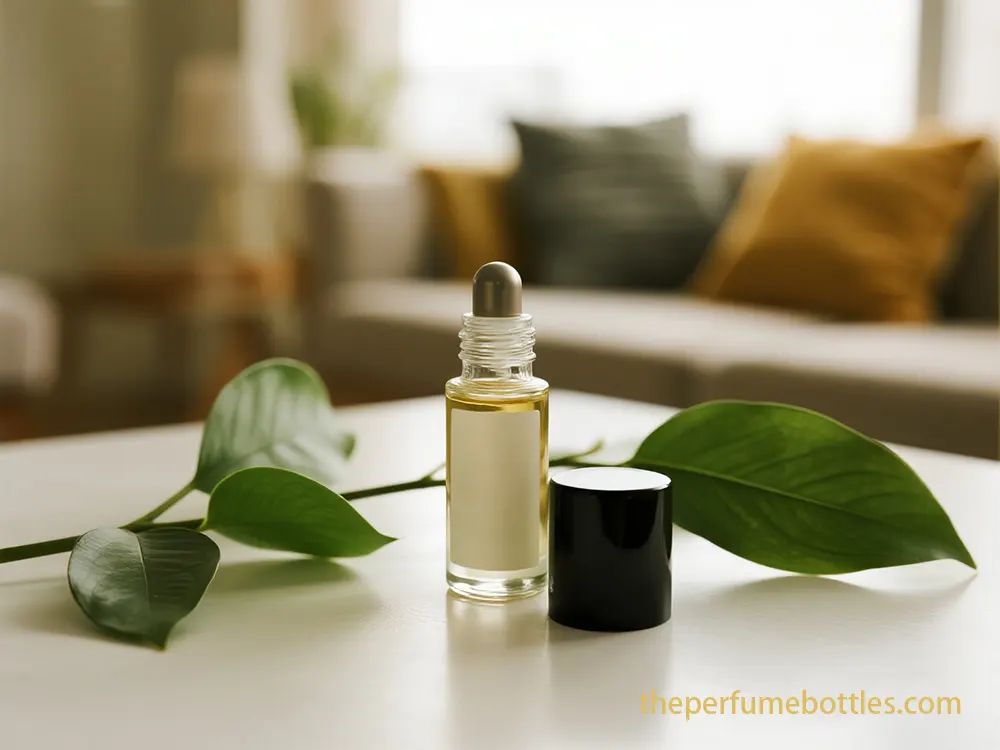
Obțineți mostre gratuite
4.2. Plastic reciclat (plastic PCR): Mai ușor, mai puțin carbon, dar poate arăta diferit
Plasticul reciclat (plastic PCR) este o opțiune excelentă. Acestea provoacă daune mult mai mici asupra mediului în comparație cu plasticul nou, demonstrând o poluare cu carbon cu 79-86%. Le puteți obține în diferite cantități de materiale reciclate, dar un amestec de 30-60% este adesea cel mai bun, având în vedere cât de bine funcționează și costul lor. Plasticul PCR, cum ar fi PCR PP (polipropilenă) pentru CAPACE și pentru sticlele PCR PET (polietilenă tereftamină), este foarte bun la substanțele chimice opuse, ceea ce este important pentru uleiurile esențiale. Cu toate acestea, există încă probleme. Pot arăta ușor gri sau terne, pot avea mici pete negre sau culori neuniforme. Acest lucru poate fi o problemă pentru mărcile sofisticate. De asemenea, poate fi dificil de procesat, deoarece calitatea plasticului reciclat poate varia. Plasticul reciclat pentru machiaj este de obicei mai scump. Reguli precum AB 793 din California impun ambalarea rapidă din plastic, care conține o cantitate minimă de material reciclat, ceea ce accelerează utilizarea acestuia.
4.3. Capace și roll-on din aluminiu: rezistente și reciclabile
Capacul de aluminiu este excelent deoarece este ușor, super rezistent și poate fi reciclat foarte bine, ceea ce îl face o opțiune de top pentru sticlele roll-on pentru uleiuri esențiale. Crearea de aluminiu nou consumă prea multă energie, dar aluminiul reciclat foarte puțin. Un lucru de observat la uleiurile esențiale este că unele uleiuri foarte acide sau reactive pot respinge aluminiul. Aceasta poate însemna că este necesară o căptușeală internă specială sau diferite tipuri de aluminiu. Roller-ele, care sunt importante pentru aplicarea uleiului, sunt disponibile din materiale dure: oțelul inoxidabil este popular deoarece se rulează lin, este curat și oprește foarte bine scurgerile; roll-on-urile din plastic sunt ieftine și ușoare; iar sticla are o senzație elegantă de roll-on și nu reacționează cu substanțele chimice.
4.4. Proiectare pentru reutilizare: reîncărcabilă și simplă
Brandurile folosesc din ce în ce mai mult „designul circular”, în care lucrurile sunt reutilizate. Sistemele reîncărcabile devin foarte populare ca o modalitate puternică de a reduce deșeurile de unică folosință. Aceste sisteme pot fi diferite: sticle din sticlă rezistente, ranforsate, pungi ușoare de reumplere, realizate din accesorii flexibile sau chiar stații de reumplere în magazine, unde vă puteți umple sticla. Pentru a funcționa bine pentru aceste sisteme, acestea trebuie să fie ușor de utilizat, simple, super curate de reumplet și, cel mai important, să oprească scurgerile. În același timp, designurile simple care utilizează materiale și forme simple se potrivesc perfect cu ideea de „scăzut” de stabilitate. În acest fel, nu numai că se utilizează materiale puține, dar adesea se menține un aspect elegant și chiar funcționează perfect, ceea ce atrage clienții pentru murături.
5. Idei noi și viitoare în tehnologia ambalajelor sustenabile
De fapt, descoperirea continuă a unor sticle cu role pentru uleiuri esențiale cu adevărat ecologice duce la noi idei în moduri avansate de a crea atât materiale, cât și obiecte.
5.1. Tehnologii avansate de reciclare
Reciclarea avansată, cunoscută și sub denumirea de reciclare chimică, este o nouă modalitate importantă de a gestiona deșeurile. Reciclarea obișnuită doar sortează și topește plasticul. Însă reciclarea avansată descompune plasticul amestecat, murdar sau greu de reciclat în micile sale componente (molecule). Metode precum piroliza (încălzirea fără oxigen) și dipolimizarea (ruperea plasticului în părțile sale originale) formează noi materiale plastice. Nu le poți diferenția de plasticul fabricat din petrol, gaze sau cărbune. Aceasta înseamnă că sunt excelente pentru utilizări importante, cum ar fi ambalarea uleiurilor esențiale, unde este important să fie super pură și complet funcțională. Indiferent de acest lucru, de obicei consumă mai multă energie și sugerează costuri mai mari, studiile (evaluarea ciclului de viață sau LCA) arată că reduce considerabil gazele cu efect de seră decât crearea de plastic nou din combustibili fosili. Un sprijin guvernamental sporit, în special din partea PPWR al Uniunii Europene, crește cererea pentru aceste materiale. Sistemele speciale de urmărire, cum ar fi certificarea ISCC Plus, sunt extrem de importante pentru a te asigura că poți afla de unde provine materialul reciclat și dovedește că acesta se află în produsul final. Aceasta explică lucrurile pentru branduri și clienți.
5.2. Materiale plastice biodegradabile (polimeri)
Uleiurile din plastic pe bază de biomateriale sunt fabricate din materiale vegetale în loc de petrol, gaze sau cărbune. Aceasta este o modalitate optimistă de a ne baza mai puțin pe substanțele chimice din combustibilii fosili. Exemplele includ PLA (din acid polilactic, amidon de porumb sau trestie de zahăr), PEF (polietilen furanoat, zaharuri vegetale) și PHAS (fabricat din polihidroxalaxalacați, produși de bacterii). PLA, de obicei din amidon de porumb sau trestie de zahăr, este foarte transparent și rigid, așa că poate fi folosit pentru unele sticle. PEF, adesea din zaharuri vegetale, este excelent în blocarea oxigenului și a CO2, ceea ce poate face produsele mai lungi. Phas-urile fabricate de bacterii sunt speciale, deoarece se descompun ușor în multe locuri naturale, cum ar fi solul și oceanul. Dar există încă provocări majore: asigurarea faptului că toate funcționează bine cu uleiuri esențiale separate, puternice, sunt capabile să producă cantități uriașe pentru producția de masă, multe dintre aceste materiale plastice sunt capabile să creeze îngrășăminte pentru a produce gunoi de grajd industrial, dezbateri despre utilizarea culturilor pentru plastic și, în general, costul este mai mare decât plasticul obișnuit.
5.3. Materiale din ciuperci (miceliu) și alge marine
Aceste materiale noi, fabricate din ciuperci (miceliu) și alge marine, sunt extrem de prietenoase cu mediul și cu adevărat inovatoare. Acum sunt excelente pentru ambalaje externe și pot fi folosite ulterior și pentru ambalajul principal. Conținutul de miceliu cultivat din rădăcini de ciuperci folosind deșeuri agricole (de exemplu, ganja sau tulpini de porumb) este un înlocuitor revoluționar pentru polistiren. Sunt excelente pentru amortizare, izolare și pot fi folosite pentru producerea de gunoi de grajd acasă. Acest lucru le face perfecte pentru inserții de protecție sau piese personalizate în interiorul ambalajelor de uleiuri esențiale. Plasticul fabricat din alge marine este studiat pentru multe utilizări, cum ar fi ambalarea alimentelor și ambalarea inteligentă. Printre beneficiile lor se numără obținerea din surse regenerabile, creșterea rapidă și descompunerea naturală. Atât miceliul, cât și materialele din alge marine trebuie să fie mai ieftine pentru a concura cu materialele cronice. Miceliul trebuie, de asemenea, să fie mai bun în a se opune umidității pentru o utilizare mai mare. Dar, de fapt, capacitatea lor pentru ambalaje circulare (unde totul este reutilizat) este vastă și merită investiții și dezvoltări constante.
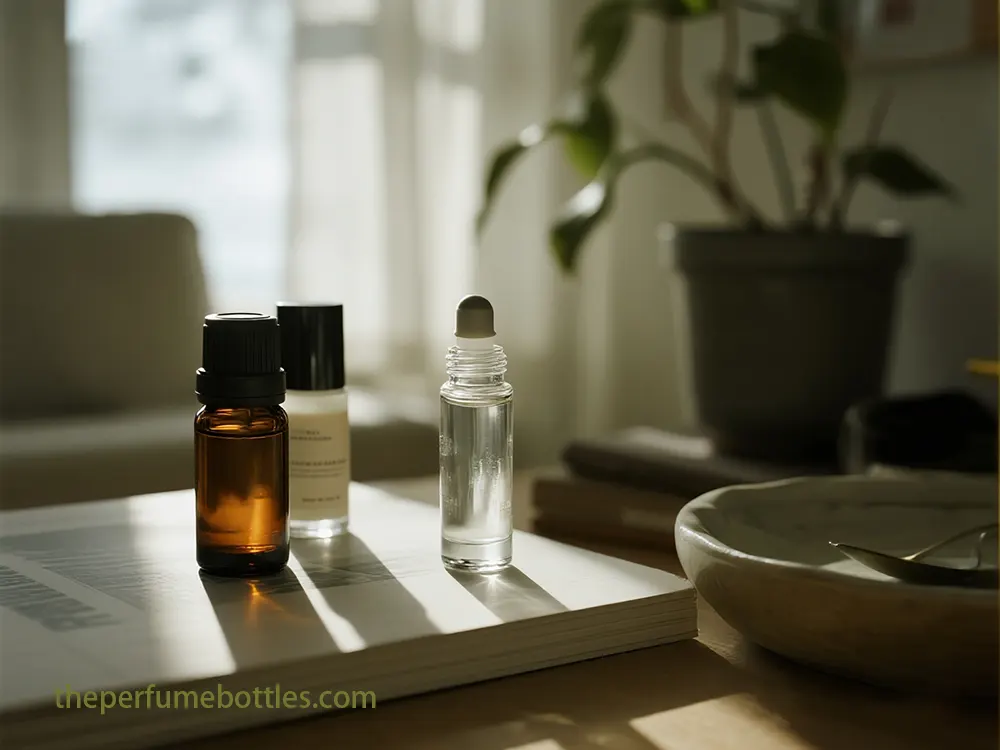
Obțineți mostre gratuite
6. Analizarea pieței și găsirea oportunităților
Piețele pentru uleiuri esențiale și ambalaje ecologice pentru produse cosmetice cresc rapid. Acest lucru este determinat de schimbarea gusturilor clienților și de regulile guvernamentale mai stricte.
6.1. Creșterea pieței și motivele acesteia
Piața petrolului, esențială din mai multe motive importante, se așteaptă să crească cu 37,25 miliarde de dolari până în 2029. Printre acestea se numără faptul că oamenii își doresc în mod constant produse naturale și biologice, concentrarea unei atenții majore asupra sănătății la nivel mondial și o conștientizare largă a mediului, care atrage pe toată lumea. În același timp, piața ambalajelor pentru produse cosmetice ecologice crește rapid. Acest lucru se datorează faptului că clienții le doresc (peste 50% dintre ei sunt interesați de stabilitate atunci când achiziționează produse cosmetice), mai multă presiune decât reguli, iar brandurile fac promisiuni mari de protejare a mediului.
6.2. Ce le place clienților și pentru ce vor plăti
Clienții arată clar că preferă cu adevărat ambalajele permanente. Peste 60% dintre clienți preferă în mod activ ambalajele benefice pentru mediu și sunt dispuși să plătească cu aproximativ 9,7% mai mult pentru un procent uimitor de 74% de produse ecologice. Aceștia preferă în special sticla sau aluminiul reciclat, ambalajele fabricate dintr-un ambalaj extern care se sparge în mod natural și opțiunile ușor de utilizat. Este important de menționat că, deși durabilitatea este un motiv important, aspectul și funcționalitatea acestora sunt în continuare extrem de importante. Clienții speră ca ambalajele ecologice să arate bine și să funcționeze perfect.
6.3. Diferite grupuri de clienți
Generația General Z și Generația Millennials sunt principalele grupuri care urmăresc tendințele pentru ambalaje permanente. Grupa de vârstă 18-24 de ani (General Z) este dispusă să plătească mai mult pentru 90% din ambalajele durabile ale tinerilor, demonstrând cât de mult le pasă de mediu. Puterea de cumpărare și impactul acestui grup cresc rapid, ceea ce îi face un public foarte important de atins. În plus, casele bogate sunt în permanență dispuse să plătească mai mult pentru produse permanente, ceea ce înseamnă că opțiunile ecologice pot fi vândute la prețuri mai mari în anumite zone ale pieței.
6.4. Diferențe în întreaga lume
Europa este în prezent lider pe piața uleiurilor esențiale datorită istoriei sale îndelungate cu remedii naturale și reguli clare. America de Nord, însă, se îndreaptă către piața recipientelor pentru uleiuri esențiale, datorită bazei sale puternice de clienți și industriei de ambalaje creative. Se așteaptă ca regiunea Asia-Pacific (APAC) să fie piața cu cea mai rapidă creștere atât pentru uleiurile esențiale, cât și pentru ambalajele ecologice. Această creștere se datorează faptului că oamenii au mai mulți bani de cheltuit, clasa de mijloc este în creștere, tot mai mulți oameni merg la orașe, iar clienții din locuri precum China, India și Asia de Sud-Est preferă materialele organice și naturale.
6.5. Puterea rețelelor sociale și îngrijorările legate de „greenwashing”
Rețelele de socializare au transformat ambalajele în unele puternice, cu un simplu recipient, care influențează efectiv ceea ce cred și cumpără clienții. Ambalajele atractive și proiectate constant pot fi extrem de populare, răspândind mesajul mărcii pe scară largă. Însă clienții devin și mai inteligenți și foarte conștienți de „greenwashing” (atunci când companiile se prefac a fi prietenoase cu mediul). Pentru a crede și a crede, marca trebuie să fie complet sinceră, să își explice clar eforturile de stabilitate și să prezinte cu mândrie certificate de încredere de la alte grupuri (cum ar fi USDA Organic, B. Corp, FSC, Cradle to Cradle). Fiind realist și susținând afirmații, poți demonstra că este extrem de important în lumea digitală de astăzi.
7. Cum să alegeți furnizorii de piese sustenabile
Colaborarea cu furnizorii potriviți nu este doar importantă; este absolut importantă pentru a produce cu succes sticle roll-on permanente pentru uleiuri esențiale și pentru a le produce în masă. Există mulți furnizori diferiți în întreaga lume, în special în China, unde există o mulțime de producători specializați. Acești producători oferă mai multe componente, cum ar fi capace de aluminiu de calitate, o varietate de sticlă (inclusiv sticlă închisă la culoare care blochează razele UV și sticlă reciclabilă) și tot mai multe opțiuni de plastic reciclat. De asemenea, oferă roll-on-uri separate (oțel inoxidabil, plastic, sticlă) și alte componente suplimentare. Adesea, furnizorii din această industrie pot personaliza o mulțime de lucruri și pot oferi o „soluție unică” pentru a facilita achiziționarea de piese pentru mărci.
7.1. Cum să verifici cu adevărat furnizorii
O metodă solidă și completă de verificare a furnizorilor trebuie să fie văzută dincolo de cost și calitate. Ar trebui să includă și performanța acestora în domeniile mediului, social și guvernanței (ESG), precum și eficiența și stabilitatea lor financiară.
A. Performanță de mediu:
- Material certificat: Furnizori selectați care oferă materiale cu un certificat dovedit că se descompun natural, sunt fabricate din surse regenerabile și o mulțime de materiale reciclabile.
- Reducerea amprentei de carbon: Verificați ce a făcut și a dovedit furnizorul că reduce amprenta dumneavoastră de carbon (emisiile totale de gaze cu efect de seră), cum ar fi utilizarea unui consum redus de energie și trecerea la energie regenerabilă.
- Eficiența resurselor: Vedeți câtă apă folosesc, programele lor de reducere a gunoiului și cât își procură materiile prime cu responsabilitate.
- Gestionarea deșeurilor: Pentru a gestiona deșeurile, verificați planurile lor complete, în care se arată cât de mult material reciclat reciclează și cum elimină în mod corespunzător deșeurile periculoase.
- Certificare ISO 14001: Uitați-vă la acest Certificat Internațional (ISO 14001) care arată că au sisteme bune de management de mediu.
- Integritatea produsului: Asigurați-vă că materialele de ambalare păstrează uleiurile esențiale în stare bună, efectuând teste riguroase pentru a le descompune sau a preveni murdărirea lor.
B. Responsabilitate socială:
- Practici etice de muncă: Verificați dacă respectă reglementările internaționale privind munca, plătesc salarii adecvate, oferă un loc de muncă sigur și nu utilizează copii sau muncă forțată (de exemplu, certificat SA8000).
- Implicarea comunității: Vedeți cum ajută furnizorul comunitățile locale.
- Aprovizionare responsabilă: Asigurați-vă că materiile prime sunt obținute într-un mod echitabil și ecologic, evitați lucruri precum „mineralele conflictuale” sau tăierea pădurilor.
C. Guvernanță (Modul în care sunt conduse):
- Transparenţă: Solicitați informații clare despre operațiunile, lanțurile de aprovizionare și rapoartele ESG ale acestora.
- Raportare ESG sonoră: Căutați rapoarte ESG periodice care au fost verificate de experți independenți.
- Conformitate cu reglementările: Confirmați că respectă cu strictețe regulile de mediu, de muncă și de ambalare (de exemplu, EPR, Ghidul Verde FTC, Access).
- Managementul puternic al lanțului de aprovizionare: Verificați dacă furnizorul poate gestiona riscul, poate derula lucrurile fără probleme și poate menține calitatea în lanțul său de aprovizionare.
D. Certificat de la alte grupuri:
- Cheia pentru demonstrarea afirmațiilor: FSC (One Stewardship Council) pentru hârtie/lemn în certificate importante, RCS (standardul pentru materiale reciclate) pentru conținutul de PCR, TNV Austria (pentru îngrășăminte), BPI (Institutul pentru Produse Biodigradabile), Cradle to Kraddle (pentru design circular), ISO 14001 (B. Corp Corporel și B. Corp Corporel și B. Corp Corporel și B. Corp Corporel dovedesc că afirmațiile lor privind stabilitatea sunt reale).
E. Noi tehnologii și idei:
- Investiții în cercetare: Vedeți dacă furnizorul investește în cercetare și dezvoltarea de modalități de a crea materiale și lucruri noi și durabile.
- Procesare avansată: Căutați abilitatea lor de a utiliza reciclarea avansată, de a produce plastic pe bază de plante sau de a utiliza alte tehnici noi.
- Instrumente digitale: Verificați dacă utilizează instrumente digitale precum blockchain pentru a permite o mai bună urmărire a lanțului lor de aprovizionare și a contractelor inteligente pentru o muncă eficientă.
- Sfaturi de specialitate: Cei mai buni furnizori oferă adesea nu doar produse, ci și consultanță de specialitate, informații de piață și ajută la rezolvarea problemelor împreună.
F. stabilitate financiară:
- Pe termen lung și dezvoltare: Verificați sănătatea financiară, performanța anterioară și dezvoltarea furnizorului, astfel încât acesta să poată fi un partener pe termen lung.
- Soluții de economisire a costurilor: Vedeți dacă pot oferi prețuri bune și soluții noi care să economisească bani pe toată durata de viață a produsului.
- Informații despre piață: Căutați furnizori care pot oferi informații utile despre noile tendințe, materialele disponibile și modificările regulilor.

Obțineți mostre gratuite
8. Sfaturi inteligente și cum să dezvoltați produse
Brandurile care doresc să fie lideri în domeniul ambalajelor roll-on ecologice pentru uleiuri esențiale trebuie să fie complete, oneste și mereu inovatoare. Trebuie să integreze sustenabilitatea în fiecare aspect al modului în care creează produse și le comercializează.
8.1. Alegerea materialelor și a designului
- Concentrați-vă pe reutilizare: Pentru ambalajul principal, alegeți sticlă reciclată de culoare închisă, de înaltă calitate (sticlă PCR), cu un procent de 40-70% materiale reciclate. Aceasta protejează produsul și ajută mediul înconjurător. Pentru capac și alte piese din plastic, folosiți plastic reciclat de bună calitate (PCR PP sau PET) cu un procent de 30-60% materiale reciclate. Luați în considerare utilizarea unor culori solide, netransparente, pentru a ascunde orice problemă de aspect, uneori asociată cu plasticul reciclat. Luați în considerare aluminiul pentru capace, dar fiți atenți la unele uleiuri esențiale care probabil îl alimentează. Asigurați-vă că utilizați căptușeala internă potrivită, dacă este necesar.
- Faceți-l reîncărcabil și reutilizabil: Proiectați pentru a consolida ambalajul principal și a arăta bine, astfel încât să poată fi reutilizat de mai multe ori. Creați un sistem de reumplere ușor și curat, cum ar fi o pungă simplă de reumplere sau stații de reumplere în magazin. Asigurați-vă că piesele importante, cum ar fi carcasa roll-on și capacele, sunt proiectate foarte precis pentru a preveni scurgerile, eventual utilizând modele speciale, cum ar fi roll-on-ul springlock™, pentru siguranță suplimentară.
- Explorează idei noi (posibilități viitoare):Urmăriți în mod activ noile materiale plastice pe bază de plante (PLA, PEF, PHA) pentru a identifica părțile unde se potrivesc bine. Acordați atenție celor fabricate din deșeuri sau plante nealimentare, astfel încât să nu concureze cu alimentele. Explorați ingrediente noi, cum ar fi ambalajele exterioare (cum ar fi inserțiile de protecție) sau chiar noi ambalaje principale din ciuperci (miceliu) sau compozite din alge marine. Asigurați-vă că sunt supuse unor teste riguroase pentru a funcționa cu substanțele chimice și a rămâne stabile. Obținerea de materiale reciclate (PCR) de înaltă calitate este ca un parteneriat inteligent cu companii avansate de reciclare. Asigurați-vă că aceste materiale au certificate solide care să le dovedească conținutul reciclat.
- Design simplu și cu un singur material:Simplificați designurile pentru a utiliza în general mai puțin material. Acest lucru reduce resursele utilizate și facilitează fabricația. Încercați să utilizați un singur tip de material ori de câte ori este posibil. Acest lucru facilitează sortarea pentru reciclare și îmbunătățește gradul de reciclare a întregului sistem de sticle cu role.
8.2. Cum să te poziționezi și să discuți cu clienții
- Fii sincer și demonstrează certificări:Explicați clienților caracteristicile permanente ale ambalajelor în mod clar și onest. Afișați în mod clar certificate fiabile de la alte grupuri (de exemplu, FSC, RCS, TNV, BPI, B Corp) pe ambalaje și în reclame. Acest lucru creează încredere și vă dovedește afirmațiile. Folosiți codul QR de pe ambalaje pentru a oferi clienților informații detaliate, despre proveniența materialelor, datele privind impactul asupra mediului (LCA) și instrucțiuni precise pentru eliminarea acestora.
- Învățați clienții: Pur și simplu nu pretinde nimic; de fapt, învață-i pe clienți despre beneficiile pentru mediu pe care le oferă alegerea lor, cum sistemele reîncărcabile le pot economisi bani și oferă-le instrucțiuni clare și simple pentru reumplerea, reutilizarea și aruncarea corectă a ambalajelor.
- Folosește rețelele sociale: Distribuie pe rețelele de socializare experiența ta de branding pentru ambalaje noi, sustenabile și interesante, precum și promisiuni ecologice. Aceasta te va conecta și te va consolida cu un grup fidel de clienți preocupați de problemele Pământului.
- Păstrează-l la nivel înalt: Asigurați-vă că utilizarea ambalajelor ecologice nu face ca produsul să pară mai puțin elegant sau să funcționeze mai puțin bine. Ambalajele durabile ar trebui să arate în continuare luxos și să ofere o experiență excelentă utilizatorului, reflectând perfect modul în care uleiurile esențiale sunt percepute ca fiind de înaltă calitate.
8.3. Colaborarea cu furnizorii și gestionarea lanțului de aprovizionare
- Verificări stricte ale furnizorilor: Folosește un sistem complet pentru a verifica furnizorii, concentrându-te pe performanța lor ESG. Pentru a te asigura că verificările și revizuirile regulate asigură respectarea regulilor și că sunt întotdeauna mai bune.
- Cereți onestitate:Furnizorii modifică datele privind impactul asupra mediului (ACS), consumul de energie, rapoartele privind gazele cu efect de seră și cantitatea de deșeuri pe care o elimină din gropile de gunoi. Aceștia cer să cartografieze proveniența materiilor prime și să își verifice cu atenție practicile morale de aprovizionare.
- Partener pentru idei noi: Lucrați îndeaproape cu furnizorii care investesc în materiale permanente noi și tehnologii avansate, cum ar fi reciclarea avansată, plasticul pe bază de plante și tehnologia blockchain pentru urmărire.
- Reduceți riscurile lanțului de aprovizionare:Folosește mai mulți furnizori diferiți, astfel încât să nu te bazezi pur și simplu pe unul singur. Asigură-te că ai planuri solide pentru a păstra lucrurile în cazul în care există probleme, cum ar fi lipsa unor materiale sustenabile.
8.4. Perspective și planuri de viitor
Studiu detaliat al „Costului pe Ciclul de Viață” (LCC) pentru a înțelege pe deplin și a demonstra câștigurile financiare pe termen lung și rentabilitatea investiției pentru proiectele de ambalare permanentă. Analizați dacă este posibil și dacă fabricarea de materiale și piese de ambalare pe bază de plante la nivel local este benefică. Acest lucru va reduce poluarea generată de transportul maritim și va ajuta economiile locale. Explorați tehnici inteligente de ambalare (de exemplu, etichete RFID/NFC) pentru o urmărire mai bună a produselor, îmbunătățind eliminarea reciclării și atrăgând clienții în moduri noi. Cercetați și reciclați plasticul pe bază de plante sau avansat, în special pentru piesele cu role, pentru a le crea complet circulare (reutilizare/reciclare permanentă). Faceți eforturi clare pentru a sprijini utilizarea de noi materiale durabile, respectând regulile industriei curate, a unor caracteristici de reciclare mai bune și a unor centre puternice de dejecții.
Urmând cu atenție aceste sfaturi, brandurile nu numai că pot satisface cererea tot mai mare de sticle roll-on cu uleiuri esențiale ecologice din partea clienților și a guvernelor, dar pot deveni și un lider clar în inovația permanentă. Acest lucru va construi o încredere permanentă, va crea clienți fideli și va asigura un viitor solid pe piață.
Comentarii
Categorii de produse
Sticle de vânzare fierbinte
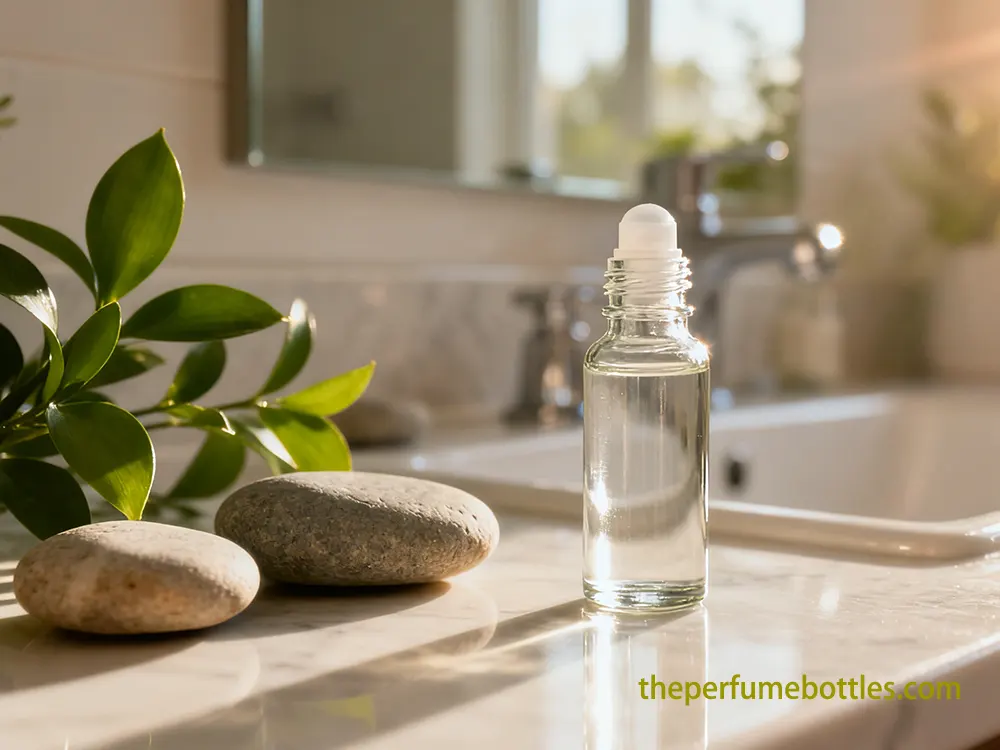
Studiu de caz: Fabrica noastră de sticle cu role din sticlă a livrat ambalaje pentru un brand de uleiuri esențiale
Un studiu de caz despre cum o fabrică de sticle cu role din sticlă a rezolvat problemele de stabilitate la rulare și durabilitate a gâtului subțire pentru a oferi sticle premium fiabile și fără scurgeri.

Cum să alegi cele mai bune recipiente de parfum roll-on pentru linia ta de produse
Recipientele de parfum roll-on sunt o alegere excelentă pentru aplicarea parfumurilor, oferind precizie și ușurință în utilizare.
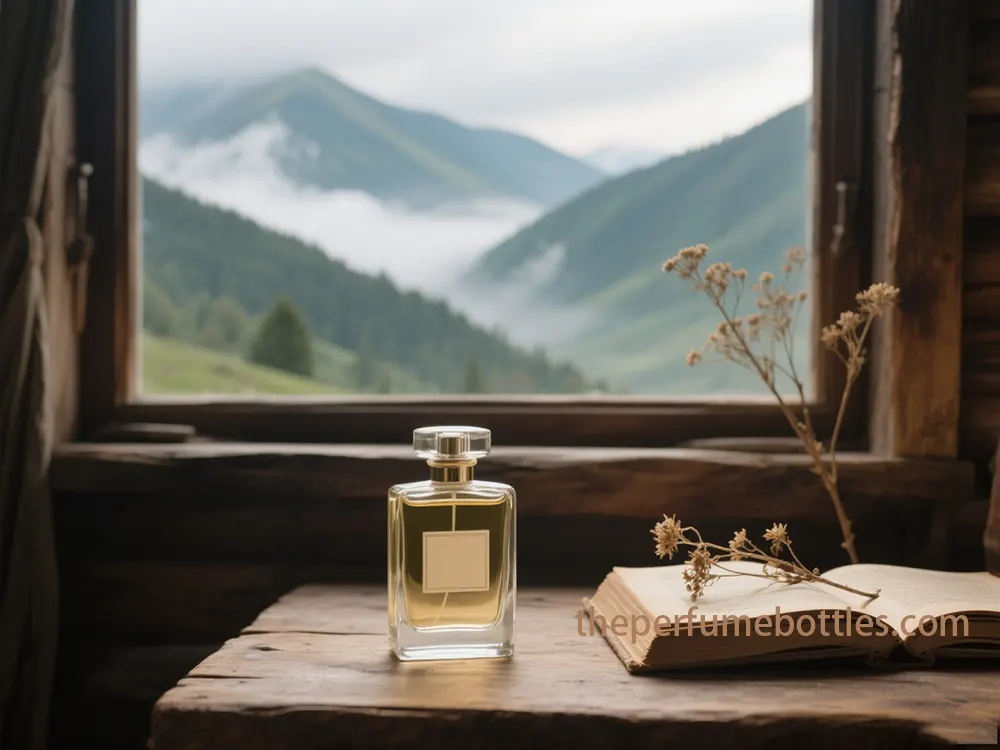
De ce tot mai multe mărci aleg flacoane de parfum personalizate
Descoperă de ce mai multe mărci alege recipiente de parfum personalizate pentru a îmbunătăți identitatea mărcii, a stimula vânzările și a adopta sustenabilitatea.
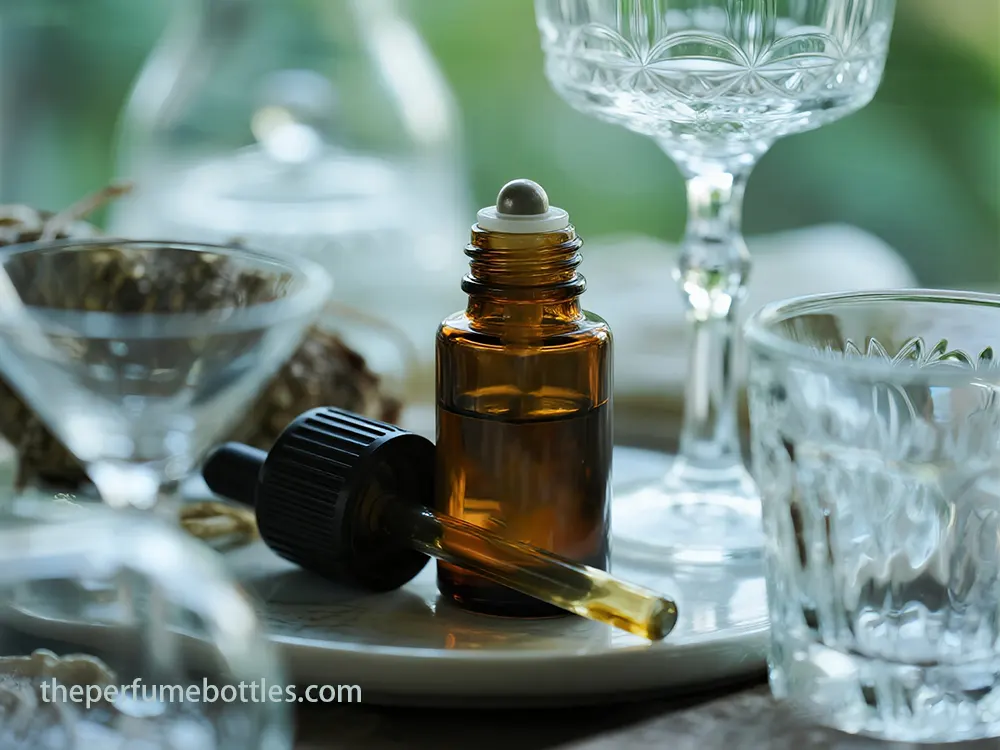
Studiu de caz: Flacoane rollerball personalizate cu ulei esențial pentru o marcă britanică
Flacoare de rollerball personalizate cu sticlă cu protecție UV asigură protecția produsului și calitatea superioară
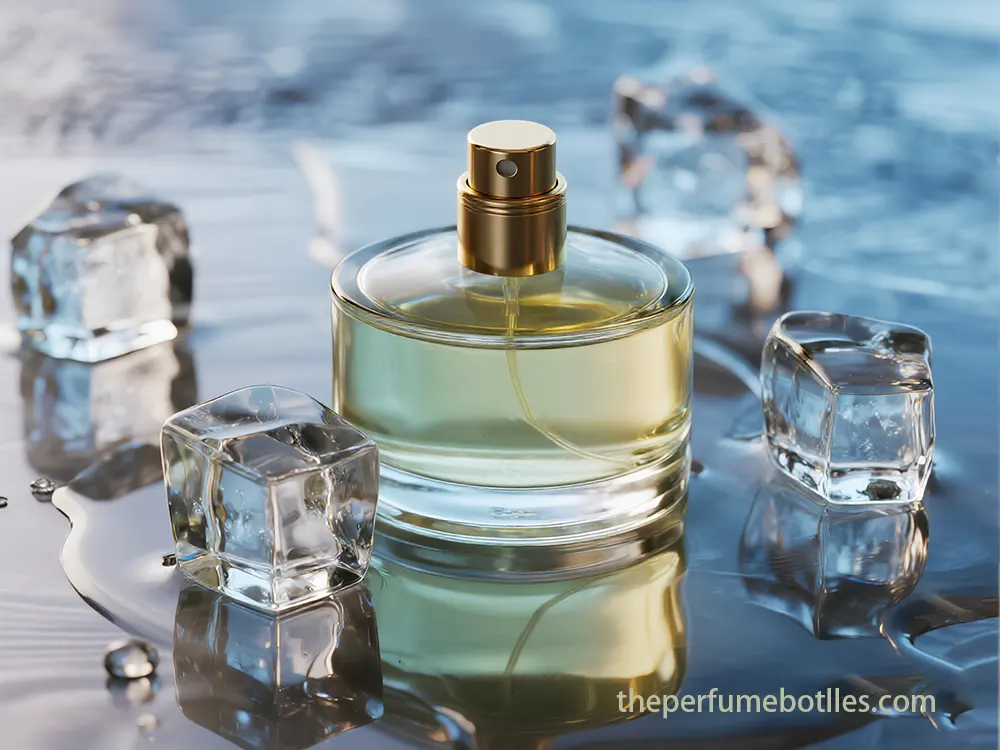
Studiu de caz: Personalizarea sticlelor de parfum pentru un brand spaniol
Personalizați sticlele de parfum cu sticlă cristalină, calitate impecabilă și aspect luxos pentru mărci de parfumuri premium.
- +86 186 5178 1159
- [email protected]
- Luni-Duminică 07:00-21:00
Etichete

Studiu de caz: Fabrica noastră de sticle cu role din sticlă a livrat ambalaje pentru un brand de uleiuri esențiale
Un studiu de caz despre cum o fabrică de sticle cu role din sticlă a rezolvat problemele de stabilitate la rulare și durabilitate a gâtului subțire pentru a oferi sticle premium fiabile și fără scurgeri.
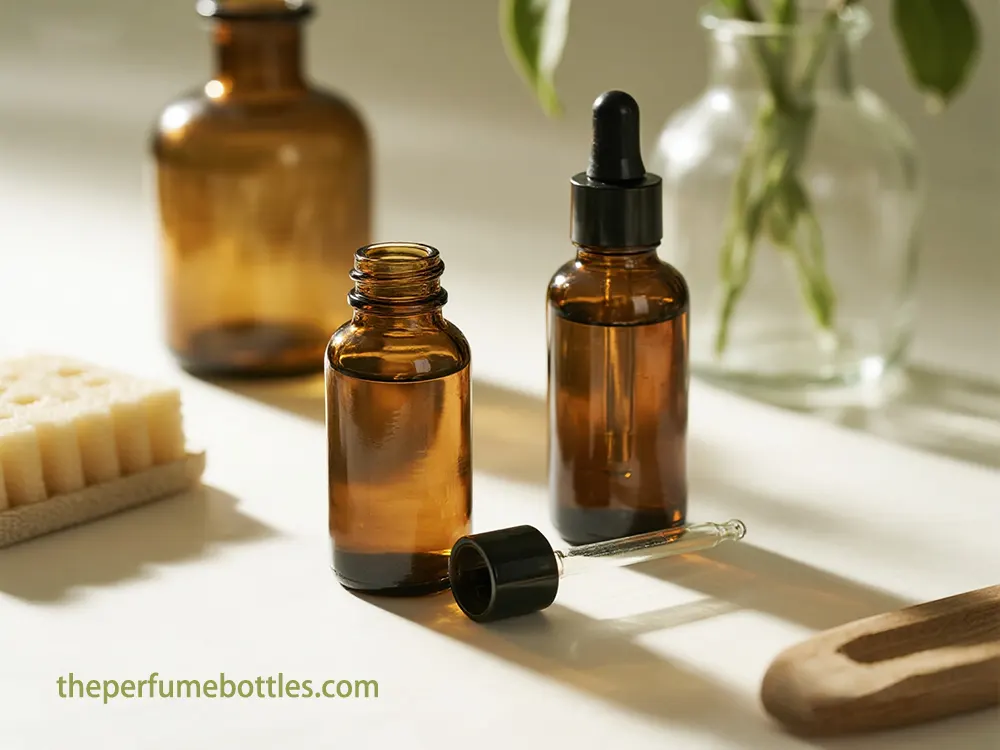
Studiu de caz: Cum o fabrică de sticle cu pipetă a ajutat un brand de uleiuri vindecătoare
Un studiu de caz despre cum o fabrică de sticle cu pipetă din sticlă a ajutat un brand portughez de uleiuri medicinale să obțină o dozare precisă, o aderență îmbunătățită și ambalaje personalizate premium.
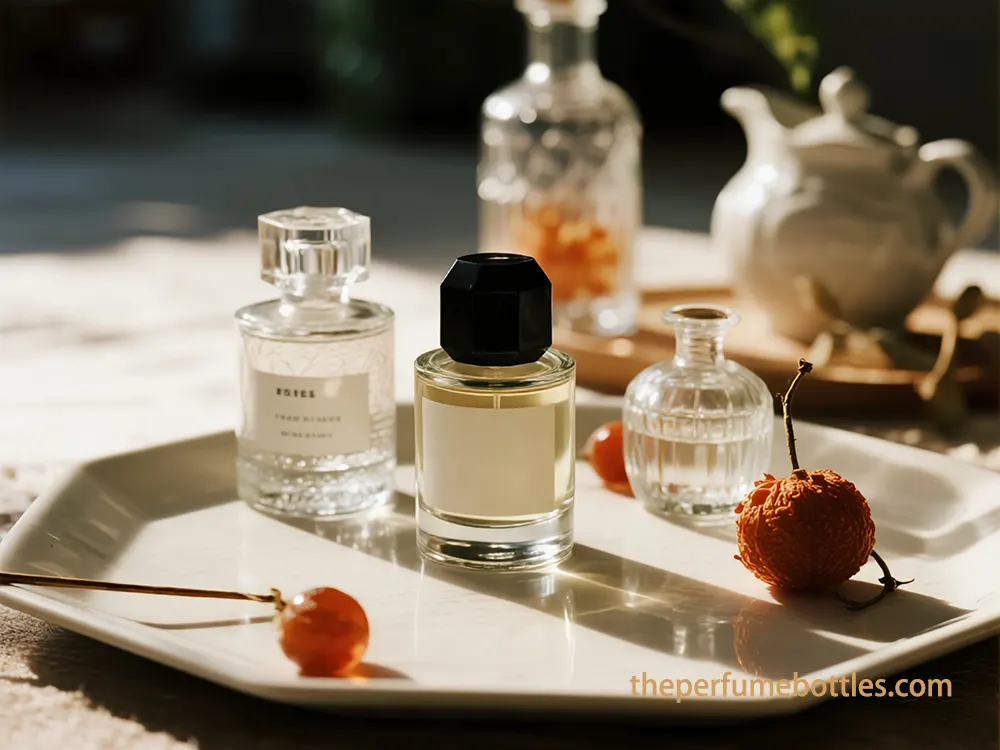
Călătoria unui parfum dintr-o fabrică de sticle de parfum din sticlă și nu numai
Descoperiți cum o fabrică de top de sticle de parfum din sticlă, chimie avansată și logistică globală
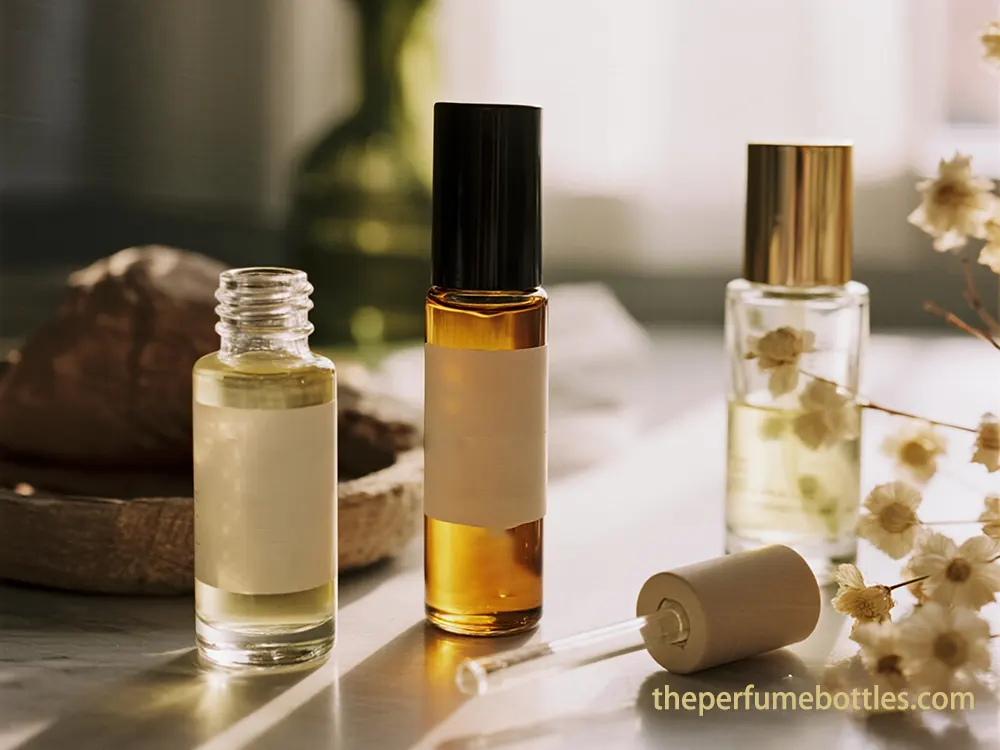
Producători de sticle cu role din sticlă în 2026 – Tendințe cheie viitoare
Explorează tendințele anului 2026 cu un producător important de sticle cu rolă din sticlă - ambalaje ecologice, design inteligent și sustenabilitate

